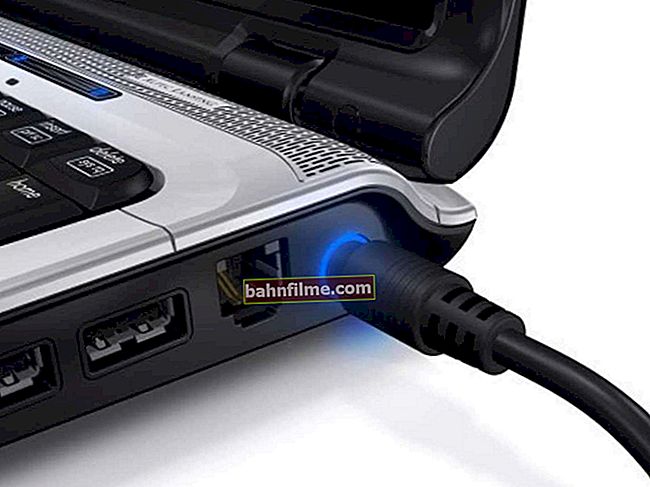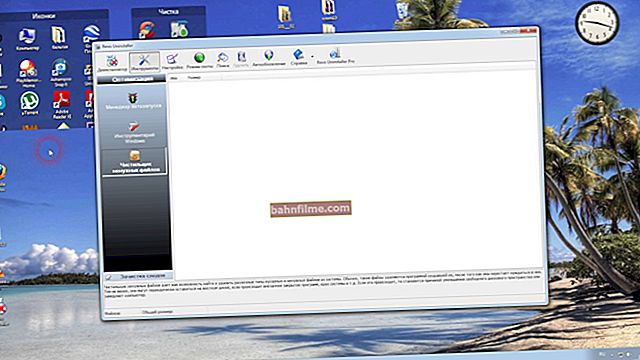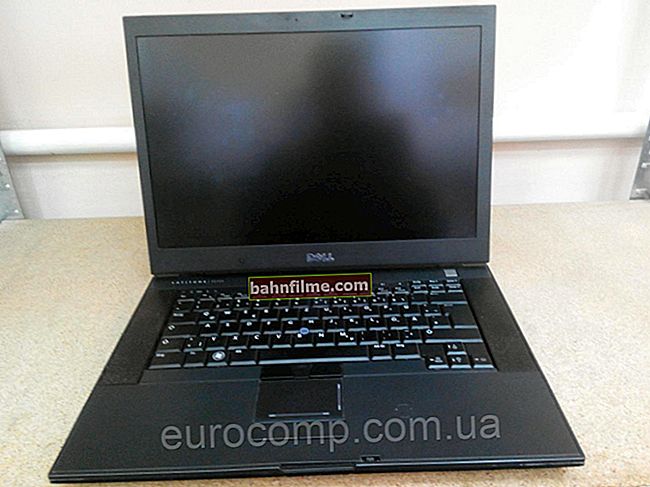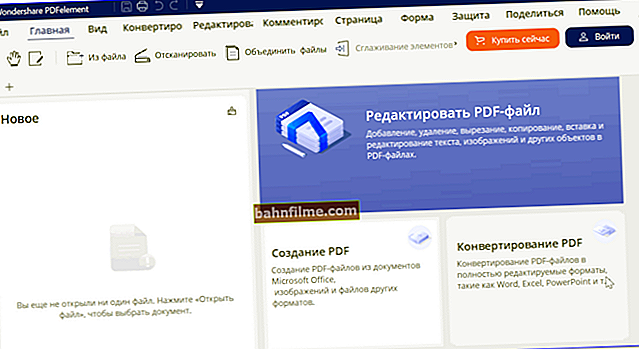 Good day!
Good day!
When solving certain computer problems, you simply cannot do without updating the BIOS / UEFI. Most often, this may be needed in the following cases:
- you bought a new processor (disk, video card, etc.), but the board does not see it;
- the current firmware version has bugs that were fixed in the newer one;
- in the updated version of UEFI / BIOS additional. options to make your PC work faster and more convenient. 👌
In general, in this small note I decided to give a step-by-step example of updating UEFI on ASRock boards (which have become quite popular recently).
The note is designed for a novice user, all actions are supported by screenshots and photos. I cannot but note that some of your menus may slightly differ from mine (depending on the board model and firmware version).
👉 Also help!
If you have a laptop / netbook, then I recommend using my previous note about updating the BIOS (for example, a device from HP).
Important!
1) Everything that you do as described below - do it at your own peril and risk!
2) Do not update BIOS / UEFI just for the sake of a new version - this is done only if there is a specific reason!
3) Firmware upgrade may void warranty service.
*
UEFI update step by step
STEP 1: Determine the exact math model. fees
And so, first we need to find out the exact model of the motherboard (with all dots and dashes ...). And it is better not to rely on the documentation that came with the PC (there might simply not be some revision to the end ...).
The easiest way to find out the model is mate. boards:
- or inspect it visually: there are always markings on the boards;
- or press the combination Win + R, enter into the window "Run" commandmsinfo32 and in the window that appears, look at the line "Main board model" . 👇

System Information - Model Mat. fees
Just in case, I cite an article below, where this issue is analyzed in more detail and several more methods are given.
👉 To help!
How to find out the model of the motherboard of a computer, laptop.
By the way!
This is probably obvious, but I can't help but recommend clarifying the current version of UEFI. It is best to do this directly in the BIOS / UEFI menu itself (as a rule, this information is displayed on the main page "Main").
👉 To help!
How to enter BIOS (UEFI) on a computer or laptop [instruction]

UEFI Version 3.30 - UEFI version
*
STEP 2: Boot the correct UEFI / BIOS version
Now we just enter the mat model. board into the Google / Yandex search box and one of the first search results will be the manufacturer's official website (we need it ...).
The list of BIOS firmware is usually located on a separate page - for ASRock you need to open the section "Specification / BIOS" (example below 👇).

ASRock Official Website - Download BIOS
Next, as a rule, you should download a couple of the latest BIOS versions (in my case, these are versions 3.30 and 3.70).
Important: pay attention to the description of each BIOS version - in some cases, essential details may be indicated there (for example, the sequence of updates - it is not always possible to install the latest firmware version right away!).

Downloading archive with firmware
*
STEP 3: preparing the flash drive
To update UEFI we need a USB stick. Almost any will do ...

We connect the flash drive to the USB port
After connecting - it will be necessary format (note: go to "My Computer", right-click on it and select the item "Format" 👇).
👉 To help!
How to format a USB flash drive (FAT32, exFAT, NTFS).

Format USB stick
An important point: the file system should be chosen FAT32 (NTFS may not be visible ...).
Note: when formatting, all data from the drive / flash drive will be deleted!

FAT32 file system
After that, you need to copy the downloaded firmware files to the USB flash drive (if they are in the archives - of course, they should be unpacked). Example below 👇.
Note: it is better to write several firmwares at once (so that if something happens, you can roll back to an older one ...).

The firmware files were extracted from the archive and written to a USB flash drive
*
STEP 4: upgrade process
If you have an uninterruptible power supply, I recommend connecting it to your PC before updating the BIOS / UEFI. If there is none, then at least start the process when you are not expected to turn off the light (it is better in the evening, when the neighbors do not decide to make repairs and start punches, welding, etc. 👌).
*
So, first go to BIOS / UEFI, go to the section "Tool" and select the option "Instant Flash" - a window should automatically appear with all the firmware versions found on the USB flash drive. You need to select one of them and click the button "Update" . 👇

Tool - start the update
Next, confirm your intention by clicking on "Yes" .

We confirm
The update process should start: during this time, do not press any keys on the keyboard and do not turn off the PC. Usually, the firmware update takes 2-5 minutes. (depending on the board model and firmware version).

Update process
After the update is complete, a small window will appear prompting you to press the button "Enter" to reboot the system.

BIOS update completed successfully - press Enter to reboot
Actually, once again entering UEFI, you will notice that the version has changed to a newer one (now the board began to support new hardware and additional functions).

BIOS version has been updated
*
STEP 5: what to do if the update is not completed successfully
In general, there are two main dangers when upgrading:
- power outage (in the absence of a UPS);
- selection of an unsuitable firmware version (for example, if the model of the motherboard is incorrectly determined, or the firmware is downloaded from an unofficial site).
If a at the very least (albeit with errors), but the PC starts up, and you can enter the BIOS - run the firmware update again (select only another version, for example).
If a The PC does not react in any way and does not turn on - try first to remove the battery on the mat. board and wait 2-3 minutes. (of course, the PC should be disconnected from the power supply ... 👌).

What does the battery look like on the mat. board
Then reconnect the battery and turn on the PC - if it does not react again, then the board must be taken to the service center. There they will be able to flash the BIOS on the programmer (the operation is not very difficult and, usually, not expensive ...).
*
That's all for this sim today ...
Additions on the topic - will not be superfluous.
Good luck!
👋









